With the continuous development of the breeding industry, many professional breeding households and professional villages have appeared in rural areas, which has increased the demand for feed. At the request of readers, today I will share with you some tips on how to build small animal feed mill factory plants in rural areas for your reference.
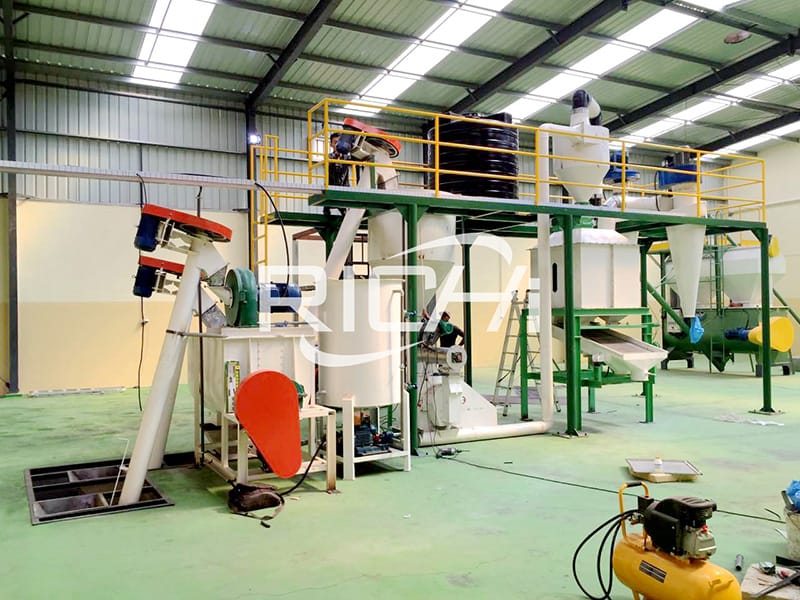
To conduct a feasibility analysis
The establishment of a small animal feed pellet line in a rural area must first conduct a thorough investigation, and then conduct economic analysis and technical demonstration on this basis. Only after the breeding industry needs, the economic benefits are good, the advanced feed production process and compounding technology is mastered, and the local spirit of "comprehensive planning, overall arrangement, adapting to local conditions, and reasonable layout" can be invested and built.
Scientifically determine the scale of small feed mill plant construction
The scale of small animal feed production is the basis for the design of animal feed pellet making plants. The scale of feed production should be determined according to the demand for feed in the supply area. The daily demand for feed can generally be calculated based on 0.15 kg per day for laying hens and 1.75 kg per day for pigs, and then the annual feed demand is calculated based on the total number of livestock and poultry raised in the supply area. Determine the production scale of the feed line for animals. For example, a small feed plant animal food manufacturing equipment with an annual output of 1,000 tons can raise 20,000 laying hens or 1,500 pigs.
According to the local power supply situation, it should first be determined whether it is one-shift production or two-shift production. For example, for a compound feed mill factory with an annual output of 4,000 tons, if one-shift production is required, only equipment with a productivity of 2 ton-hours needs to be selected; if two-shift production, only feed processing equipment with an output of 1 ton/hour is selected. In order to give full play to the production capacity of the feed processing equipment. To improve economic efficiency, two-shift production is generally appropriate when the power is guaranteed.
In addition, the annual output base of the equipment, the prevailing saying in China is: if the equipment production output is 1 ton/hour, the annual production capacity is 2000 tons, this is a shift system, and the equipment annual time base is based on 2000 hours. Therefore, according to the feed production capacity of the animal feed equipment and further considering the development plan of the local aquaculture industry or the current aquaculture scale, the tonnage of the animal feed mill equipment can be selected according to local conditions, thereby scientifically determining the scale of the plant.
Choose the site correctly
The site of the animal feed processing machine plant should follow the principle of “processing nearby” and prioritize construction in townships with sufficient feed resources, developed animal husbandry, convenient transportation, guaranteed electricity, and markets, or villages with a certain scale of professional breeding households. If the small animal feed pellet production plant is built near the grain depot, or integrated with the grain depot, the housing facilities and corresponding costs for raw grain storage can be omitted.
Small poultry livestock feed pellet manufacturing plant for animal feed should not be built in toxic, harmful, pathogenic gas or dust-contaminated places, and should not be built near or under the limelight of livestock and poultry farms, pesticide factories, and sewage treatment plants.
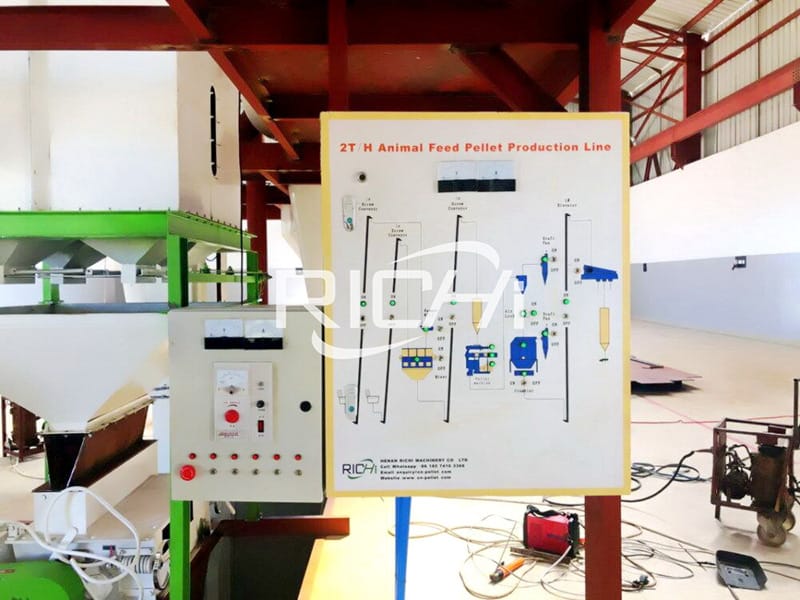
How to choose small sized animal pellet feed mill machine?
How to choose pellet feed press is a problem that every farmer cares about. Now take the small flat mode pellet machine as an example to talk about how to choose a pellet feed press.
- Choose different feed formulas according to the feeding objects. Such as fish, chicken, rabbit, sheep, etc.
- Choose according to the relevant standards of the Ministry of Agriculture.
- The appearance of the pellets should be smooth, the hardness should be moderate, the crushing rate should be less than 4%, and the water content of the feed should be less than 10%.
- During the pressing process of animal pellet feed, the temperature of the pellets coming out of the machine should be about 60℃, which can be matured deeply, and should not exceed 80℃ at most.
- It is best to choose an animal pellet feed making machine with "dry in, dry out".
In addition, when choosing a small animal feed pellet mill machine for making pellets, you should choose products from regular and professional animal feed machinery manufacturers, and even shop around.
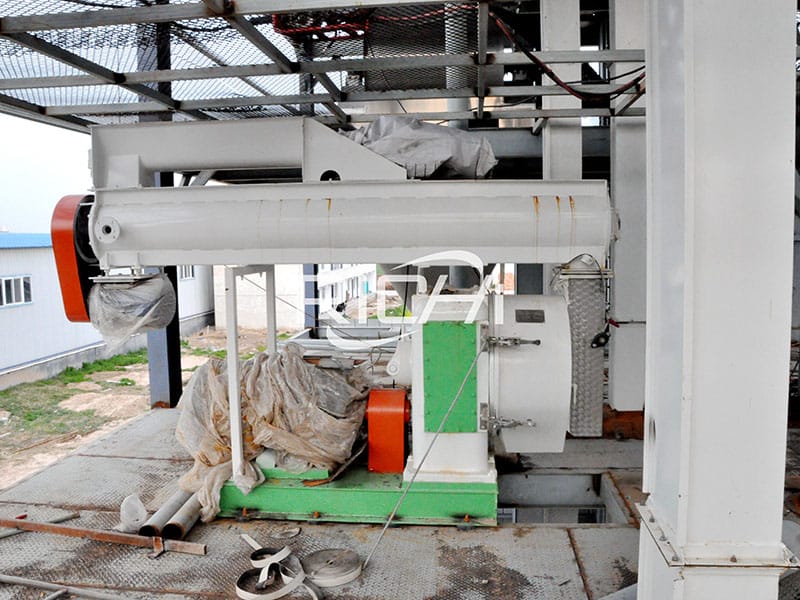
Choose Animal Feed Machine Production line Machine for Making Animal Food Carefully
Before setting up a plant for manufacturing animal feed, the corresponding complete set of feed pellet manufacturing plant equipment should be selected according to the determined production scale. The following issues should be considered when choosing:
(1) Selection of feed prodction process flow
- ① Continuously measure in proportion-crush-mix;
- ② Batch measurement-crushing-mixing;
- ③ Crushing-batch measurement-mixing.
(2) Selection of unit measurement form
- Volumetric measurement: labor-saving, not easy to change the formula.
- Gravimetric measurement: high accuracy, convenient to change formula.
(3) Selection of feed processing line plant
- ①The formula is easy to change, the proportioning is accurate, the mixing uniformity is good, and the feed particle size is adjustable.
- ②The unit has reasonable manufacturing process, simple structure, convenient operation, easy maintenance, compact overall layout and small floor space.
- ③Low noise and dust, and the unit must have safety control devices.
- ④Low energy consumption, low price, and easy to buy accessories.
In summary, for feedstuff units with the same productivity, technical and economic indicators should be compared from the aspects of installed capacity, batching measurement method, power consumption, equipment price, and required plant area, and comprehensive analysis should be performed to select them. The required production line equipment. Generally speaking, to establish small feed processing plants in rural areas, a complete set feed producing equipment with an output of 400kg/h to 2000 kg/hour should be selected.
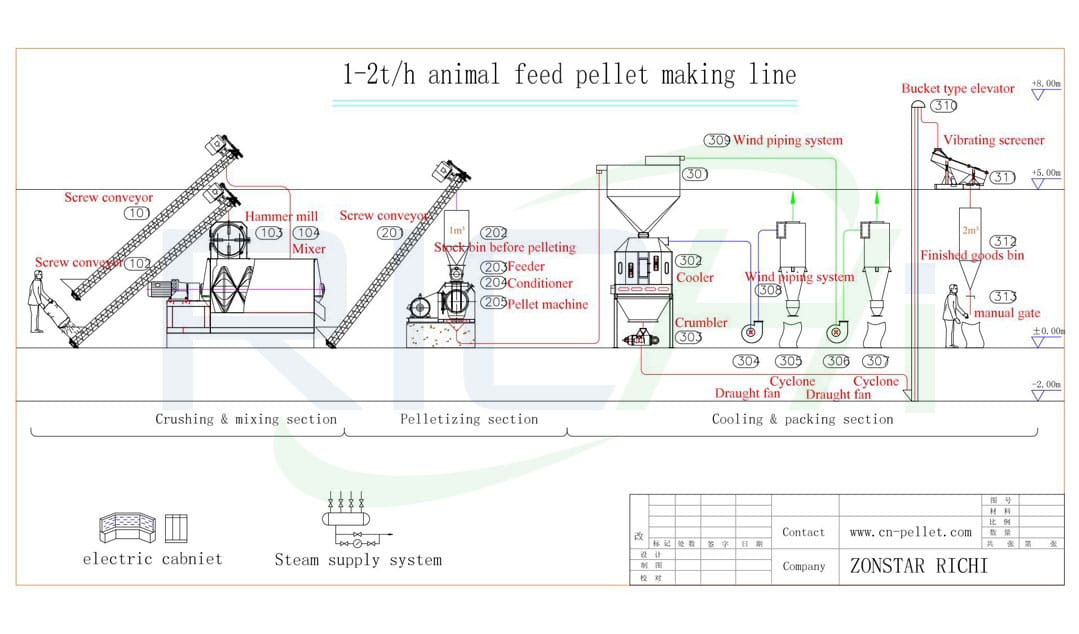
Correct use of corn grinder for animal feed
- The small animal feed grinder should be fixed on the cement foundation for long-term operation.
- After the feed hammer mill grinder is installed, check the fastening of each part of the fasteners, and tighten them if they are loose.
- Check whether the belt tightness is appropriate and whether the motor shaft and the shredder shaft are parallel.
- Before starting the small animal feed crusher machine for grinding feed powder, turn the rotor by hand to check flexibility.
- Do not change the belt pulley casually.
- After starting, the grinder will run idling for 2 to 3 minutes, and then feed the material after there is no abnormal phenomenon.
- Pay attention to the operation of the crusher at all times during work.
- The crushed materials should be carefully checked to avoid accidents caused by hard objects.
- Operators should not wear gloves, stand on the side of the grinder when feeding.
- When it is blocked, it is strictly forbidden to forcibly feed or drag out feed by hand or wooden stick.
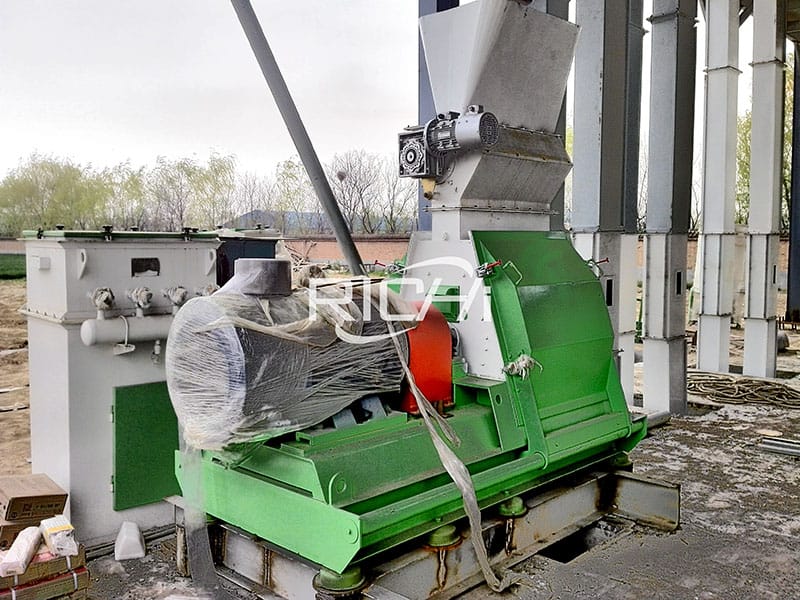
Forage Crusher
The grass shredder machine is mainly used to crush various kinds of hay and crop straws and other coarse fodder. Farms, pastures and breeding professionals use it to process grass meal fodder. The forage grinder can be matched with the pelletizer and other equipment to form a coarse feed processing unit with grass or straw as the main raw material. Can produce powder feed or pellet feed. Pellet feed is not easy to deteriorate, is easy to transport and store, and has strong palatability. It is the best feed for ruminants such as cattle, sheep, camels and poultry. If the moisture content of the raw material is below 15% and the sieve opening is 3 mm (such as the size of sorghum grains), it can produce more than 500 kg per hour. The annual output of a single shift can reach more than 1,000 tons, and the economic benefits are considerable.
(1) Precautions and usage methods
- Before use, check the electrical equipment for leakage, whether the bolts in each part are loose, whether the hammer and screen are damaged, and the air regulating plate should be halfway open or fully open state.
- Start the dry wet grass hammer mill and run it empty for 10 to 15 minutes before it can be used.
- Tighten the cuffs, put on a work cap, stand on both sides of the feed inlet, and pick out hard debris.
- Don't extend your arm into the filling chamber, and don't use iron rods to poke the material.
- The material should be evenly fed. Don't leave casually.
- When you need to check the inside of the grain grass hammer mill, cut off the power first.
- After the work is done, turn off the switch to clean the site.
(2) Repair and maintenance
- Pay attention to inject grease into the rotor bearing of the straw shredder hammer mill at any time.
- When the grinder has been working for about 500 hours, clean the rotor bearing and inject butter.
- The hammer is the only vulnerable part of the machine; replace all new hammers at one time.
- If the sieve is small, it can be used after repair. Clean and prevent rust when not used for a long time.


